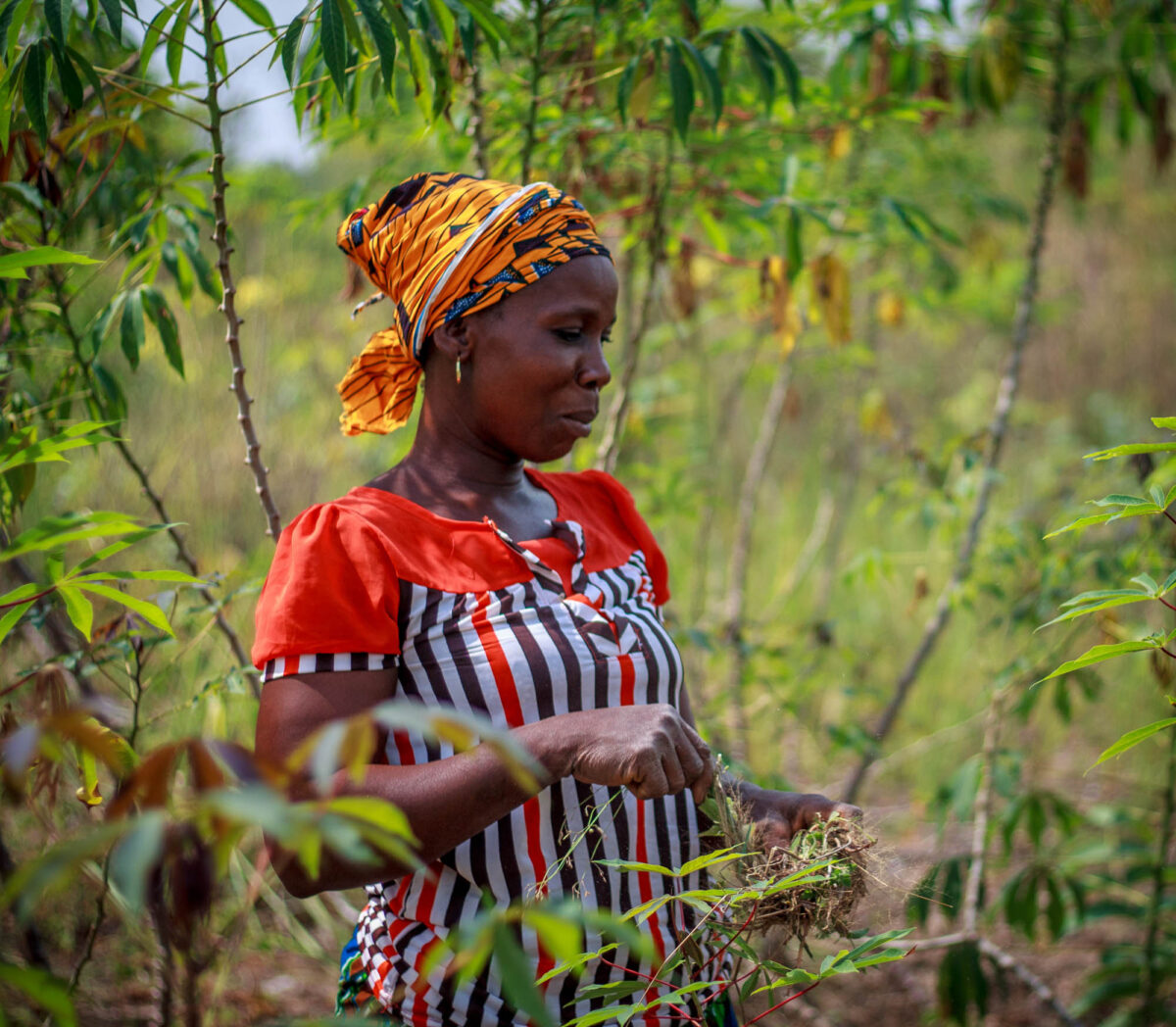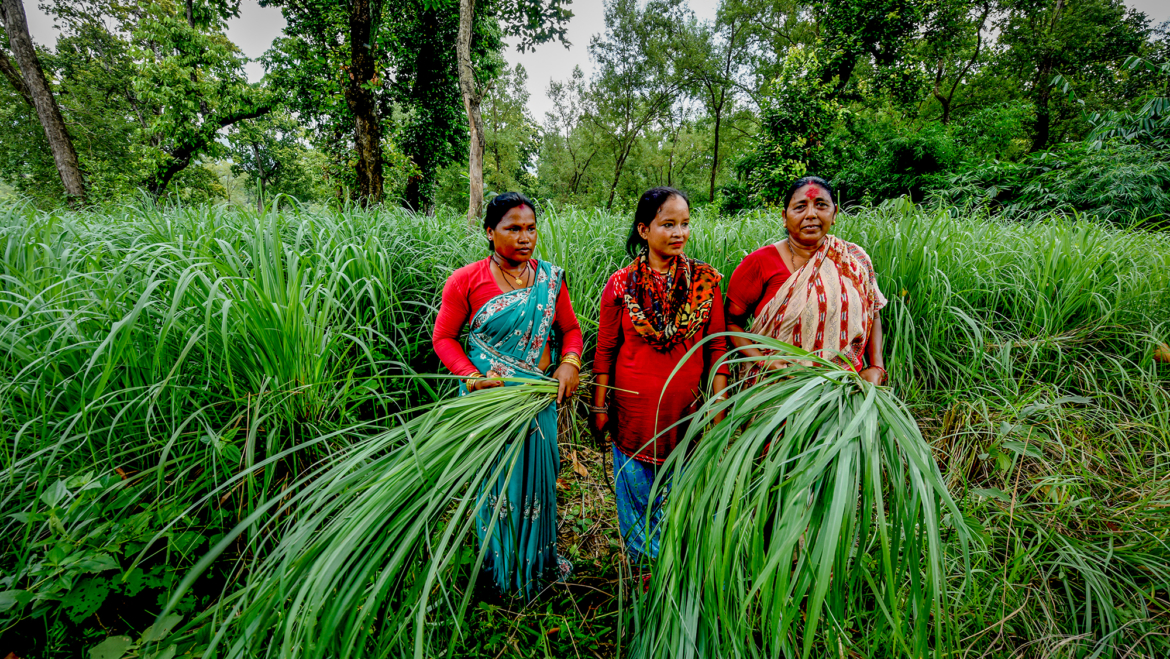This past year has provided one reminder after another not only of the connections between human individuals and

The West Africa Biodiversity and Climate Change (WA BiCC) supports conservation and climate-resilient, low-emission growth across West Africa. This work is featured as a case study in the “Cross Sectoral Guide: Sustainable Landscapes and Democracy, Human Rights, and Governance.” Photograph for USAID by John Dwyer.
societies but also of the tightly woven fabric of the systems in which we exist. The Covid-19 pandemic has shaken the world awake to this reality, but the climate has been whispering the news to us for years. By the third decade of the twenty-first century, shoring up a country’s democratic systems can be pointless without also ensuring its environmental stability; at the same time, addressing climate change is as much a matter of political economy as it is about reinforcing wetlands or changing the way we create energy. Poor governing institutions tend to manage environmental resources for short-term and self-enriching gain, and collapsing ecosystems rarely form a strong basis for stable, democratic rule. Happily, the inverse is also true: an effort to support good governance or to protect the environment can yield a return on investment in both domains.
The West Africa Biodiversity and Climate Change (WA BiCC) supports conservation and climate-resilient, low-emission growth across West Africa. This work is featured as a case study in the “Cross Sectoral Guide: Sustainable Landscapes and Democracy, Human Rights, and Governance.” Photograph for USAID by John Dwyer.
The Cloudburst Group, a women-owned small business, has been helping drive the integration of democracy, human rights, and governance with global climate change goals at USAID. USAID’s integration of its Democracy, Human Rights, and Governance (DRG) subject areas with its Sustainable Landscapes (SL) initiatives recognizes these connections in very practical terms, promising vast impact in terms of development outcomes around the world. Collaborating with USAID’s DRG Center, Cloudburst has been privileged to help write the policies that DRG and environmental offices around the world will be using to bring these development pillars together like the integral natural systems that they are.
Cloudburst developed the forthcoming “Cross Sectoral Guide: Sustainable Landscapes and Democracy, Human Rights, and Governance,” which formalizes policies and practices to help practitioners integrate DRG and Sustainable Landscape approaches to better support development outcomes. This resource leads practitioners through strategic planning for positive outcomes in governance and environmental domains, highlighting case studies in Nepal, Cambodia, and four countries in West Africa. These three examples alone contain sustainable landscape integrations as broad as wildlife protection, coastal resilience, biodiversity loss, sustainable watershed management, forestry management, and payments for ecosystem services — alongside inseparable themes of livelihoods, governance, gender equality and social inclusion, economic opportunity, and accountability. Cloudburst combined a desk review with key informant interviews with more than 50 USAID staff, program implementers, and scholars before drafting the Guide, which will be released publicly at the end of April.
This research laid the backbone for consultation with the USAID Missions in Mexico, Madagascar, and the Philippines to better understand approaches to the real-world systematic integration of these subject areas. Working with Mission staff, Cloudburst reviewed portfolios to identify opportunities to incorporate SL and DRG that can help fight corruption and waste, increase scale and sustainability, improve livelihood and economic outcomes, work more effectively in conflict and resilience situations, and effectively engage indigenous people and environmental defenders.
This work builds on more than a decade of partnership with USAID to provide training, capacity building, and backstopping support on the Agency’s NEPA implementing regulation 22CFR216 (Reg. 216), the Foreign Assistance Act Section 119 addressing Biodiversity, the Pelosi Amendment (Title XIII) relating to Multilateral Development Banks (MDB), and relevant Chapters of USAID’s Automated Directive System (ADS). Our team also provides technical assistance in an array of environmental fields including USAID / USG environmental regulations, environmental management systems, pollution prevention / cleaner production, environmental due diligence (EDD), environmental impacts, industrial and utility infrastructure, coastal zone management, environmental policy, pesticides, biodiversity, andagriculture/agro systems to meet the challenging compliance needs of USAID-funded programs.
About Us: Cloudburst is a mission-driven organization working to advance social, economic and environmental resilience in the U.S. and across the Globe. Cloudburst strives to advance democracy, human rights, and governance; empower women, youth, indigenous, and other underrepresented populations; prevent and end homelessness; increase the reach of community development; expand economic development opportunities; increase environmental compliance and sustainability; secure land and property rights; enhance food security; and promote public and behavioral health interventions. To achieve this in the U.S. and across the globe, Cloudburst collects and analyzes data; monitors and evaluates programs; communicates promising evidence-based practices; and provides outcomes-focused training and technical assistance. Learn more about Cloudburst at: https://www.cloudburstgroup.

